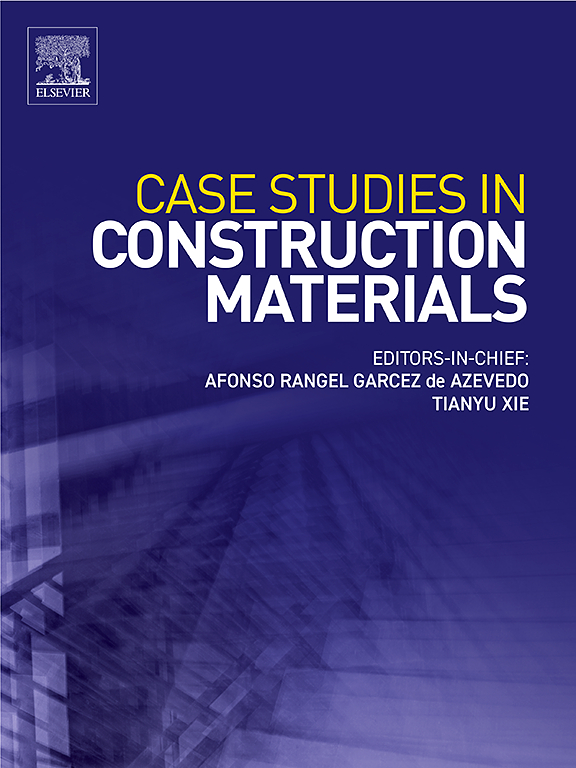Flexural strengthening of corroded steel beams with CFRP by using the end anchorage: Experimental, numerical, and machine learning methods
IF 6.6
2区 工程技术
Q1 CONSTRUCTION & BUILDING TECHNOLOGY
引用次数: 0
Abstract
This article presents the mechanical behavior of corroded steel beams that have been strengthened with carbon fiber-reinforced polymer (CFRP) layers in order to mitigate the effects of corrosion. Six beams are analyzed experimentally, including unreinforced and CFRP-reinforced specimens, with regard to the corrosion percentage, location, and shape on strength, ductility, and modes of failure. In the beam with 50 % corrosion, reinforcing with CFRP compensated for the strength reduction. In the beam with 100 % corrosion, after CFRP reinforcement, the strength was only 4 % lower than that of the control beam. A new end anchorage system was developed to avoid CFRP slippage, ensuring full utilization of its tensile capacity. Numerical modeling further validated the experimental results and then numerical specimens were used for parametric and Machine Learning (ML) studies. The results indicated that corrosion in the upper flange gave the most severe strength reduction up to 39.7 %, although this was effectively mitigated by CFRP reinforcement. The ML prediction showed that the CatBoost algorithm had the highest accuracy, with an score of 0.954. Additionally, the feature importance analysis revealed that the location and level of the corrosion are the most influential features affecting the reduction in the capacity of the corroded beam.
末端锚固对腐蚀钢梁的碳纤维布抗弯加固:实验、数值和机器学习方法
本文介绍了用碳纤维增强聚合物(CFRP)层加固腐蚀钢梁的力学行为,以减轻腐蚀的影响。实验分析了六根梁,包括未加筋和cfrp加筋的试件,关于腐蚀百分比、位置和形状对强度、延性和破坏模式的影响。在50% %腐蚀的梁中,用CFRP加固弥补了强度的降低。在腐蚀为100 %的梁中,加固后的强度仅比对照梁低4 %。为了避免碳纤维布滑移,保证其抗拉能力的充分利用,开发了一种新型的端部锚固体系。数值模拟进一步验证了实验结果,然后将数值样本用于参数化和机器学习(ML)研究。结果表明,上法兰的腐蚀导致了最严重的强度下降,高达39.7% %,尽管CFRP加固有效地缓解了这一影响。ML预测结果显示CatBoost算法准确率最高,R2值为0.954。此外,特征重要性分析表明,腐蚀的位置和程度是影响腐蚀梁容量降低的最重要特征。
本文章由计算机程序翻译,如有差异,请以英文原文为准。
求助全文
约1分钟内获得全文
求助全文
来源期刊

Case Studies in Construction Materials
Multiple-
CiteScore
7.60
自引率
19.40%
发文量
842
审稿时长
63 days
期刊介绍:
Case Studies in Construction Materials provides a forum for the rapid publication of short, structured Case Studies on construction materials. In addition, the journal also publishes related Short Communications, Full length research article and Comprehensive review papers (by invitation).
The journal will provide an essential compendium of case studies for practicing engineers, designers, researchers and other practitioners who are interested in all aspects construction materials. The journal will publish new and novel case studies, but will also provide a forum for the publication of high quality descriptions of classic construction material problems and solutions.
 求助内容:
求助内容: 应助结果提醒方式:
应助结果提醒方式:


